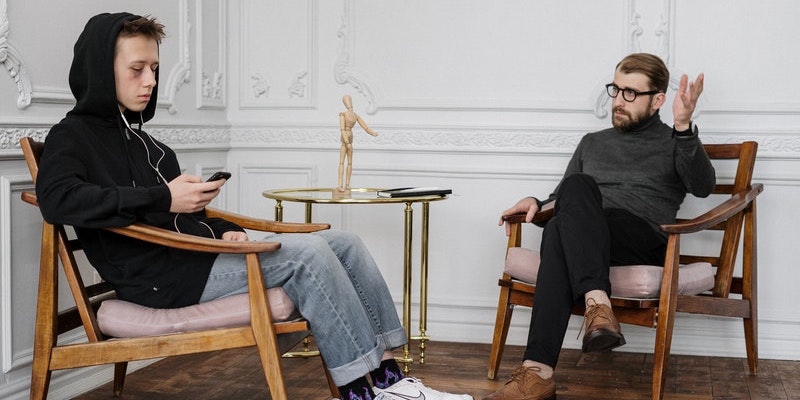10 Tips for Learning How to Say No
Learning how to say no and acquiring practical strategies is key. These tips serve as a toolkit for individuals seeking to assert their boundaries with confidence and compassion.
From honing assertiveness skills to prioritizing self-care, each tip offers valuable insights and techniques to empower individuals to navigate the delicate balance between honoring their own needs and maintaining healthy relationships (Holmes, 2016).
1. Practice assertiveness
Assertiveness training can help individuals build the confidence and communication skills necessary to express their needs and boundaries assertively without resorting to aggression or passivity.
2. Set clear boundaries
Clearly defining personal boundaries and communicating them to others can help individuals establish a framework for self-respect and prevent feelings of resentment or burnout (Holmes, 2016).
3. Prioritize self-care
Prioritizing self-care activities such as exercise, meditation, and hobbies can help individuals cultivate a strong sense of self-worth and resilience, making it easier to say no when necessary.
4. Use “I” statements
Framing responses using “I” statements such as “I need” or “I feel” can help individuals assert their boundaries without assigning blame or provoking defensiveness in others (Johnston, 2023).
5. Practice saying no
Regularly practicing saying no in low-stakes situations can help individuals build confidence and familiarity with the skill, making it easier to implement when faced with more challenging requests (Holmes, 2016).
6. Offer alternative solutions
When declining a request, offering alternative solutions or compromises can demonstrate willingness to help while still honoring personal boundaries (Ravichandran, 2003).
7. Take time to respond
Instead of immediately agreeing to a request, taking time to consider the implications and assess personal capacity can prevent impulsive commitments and ensure decisions align with one’s priorities (Ravichandran, 2003).
8. Learn to tolerate discomfort
Accepting that saying no may initially feel uncomfortable but ultimately expands your window of tolerance for discomfort and stress can help individuals overcome feelings of guilt or anxiety associated with setting boundaries.
9. Practice self-compassion
Cultivating self-compassion and recognizing that saying no is an act of self-care, not selfishness, can help individuals navigate feelings of guilt or unworthiness (Muris & Otgaar, 2023).
10. Seek support
Seeking guidance and support from trusted friends, family members, or mental health professionals can provide encouragement and validation as individuals work to develop and assert their boundaries.
Different Ways of Saying No: 6 Examples
 Navigating the realm of saying no isn’t just about finding the courage to decline; it’s also about mastering the art of diplomacy and tact.
Navigating the realm of saying no isn’t just about finding the courage to decline; it’s also about mastering the art of diplomacy and tact.
Different situations call for different approaches, and having a repertoire of responses on hand can make the process smoother and more effective. Whether it’s a gentle decline to say no nicely or a firm refusal, each method communicates boundaries while preserving relationships and self-respect (Neff, 2023).
Inspired by Ravichandran (2003), the following are various ways of saying no politely but meaningfully with examples tailored to different contexts and personalities.
The polite decline
“Thank you for thinking of me, but I’m unable to commit to this right now.”
This approach expresses gratitude for the invitation while politely declining without offering elaborate excuses or justifications.
The deflective response
“I appreciate your offer, but maybe Sue has more capacity at the moment?”
This response redirects the focus away from the requestor’s specific request.
The prioritization and boundary assertion
“I’ve decided to prioritize my personal wellbeing and need to decline this opportunity.”
This assertive approach clearly communicates the importance of self-care and personal boundaries without apologizing or feeling guilty.
The pause-and-reflect response
“I need some time to think about this. Can I get back to you later?”
This response buys time for careful consideration and evaluation of the request before committing, preventing impulsive decisions.
The alternative or negotiating solution
“I’m unable to do this under those conditions, but here is what I need in order to be on board.”
Offering alternative solutions demonstrates willingness to support without compromising personal boundaries or integrity.
The honest explanation
“I appreciate the invitation, but I’m feeling overwhelmed with my current workload and need to prioritize my existing commitments.”
This approach provides a transparent explanation for the refusal, fostering understanding and respect from the requestor.
How to Deal With Unwelcome Responses
As you embark on your personal freedom journey and assert new boundaries for yourself, encountering resistance from others is almost inevitable.
Saying no can disrupt established patterns and expectations, prompting discomfort or even pushback from those accustomed to having their needs prioritized (Moore, 2022).
It’s important to recognize that this resistance often stems from a fear of change as individuals grapple with the shifting dynamics of a relationship where their needs are no longer automatically prioritized.
However, it’s crucial to distinguish between healthy resistance from individuals who are willing to adapt and grow and toxic behavior from those who resist out of a desire to maintain control or manipulate the situation.
In healthy relationships, encountering resistance can be an opportunity for growth and mutual understanding. Open communication and empathy can facilitate constructive dialogue, allowing both parties to express their needs and concerns while working toward a compromise that honors each person’s autonomy and wellbeing (Deci & Ryan, 1995; Muris & Otgaar, 2023).
Conversely, toxic relationships may feature persistent resistance or attempts to guilt trip, manipulate, or coerce compliance (Copley, 2023). In such cases, it’s essential to prioritize self-care and boundary setting, recognizing that personal freedom and mental health are nonnegotiable (Donald et al., 2018).
Dealing with unwelcome responses requires a combination of assertiveness, empathy, and self-care (Moore, 2022). It’s essential to remain firm in your boundaries while also acknowledging the other person’s perspective and feelings.
Setting clear expectations and consequences for boundary violations can help establish accountability and maintain a healthy dynamic.
Additionally, seeking support from trusted friends, family members, or mental health professionals can provide validation and guidance in navigating challenging relationships.
Ultimately, the quest for personal freedom may entail difficult conversations and uncomfortable moments, but staying true to yourself and prioritizing emotional and mental wellbeing is paramount (Donald et al., 2018).
 In a world that often values compliance over authenticity, the notion of personal freedom becomes not just a luxury but a necessity for our wellbeing (Donald et al., 2018; Muris & Otgaar, 2023).
In a world that often values compliance over authenticity, the notion of personal freedom becomes not just a luxury but a necessity for our wellbeing (Donald et al., 2018; Muris & Otgaar, 2023). Learning how to say no is not just about asserting boundaries; it’s an act of profound self-respect and
Learning how to say no is not just about asserting boundaries; it’s an act of profound self-respect and 
 Navigating the realm of saying no isn’t just about finding the courage to decline; it’s also about mastering the art of diplomacy and tact.
Navigating the realm of saying no isn’t just about finding the courage to decline; it’s also about mastering the art of diplomacy and tact.


